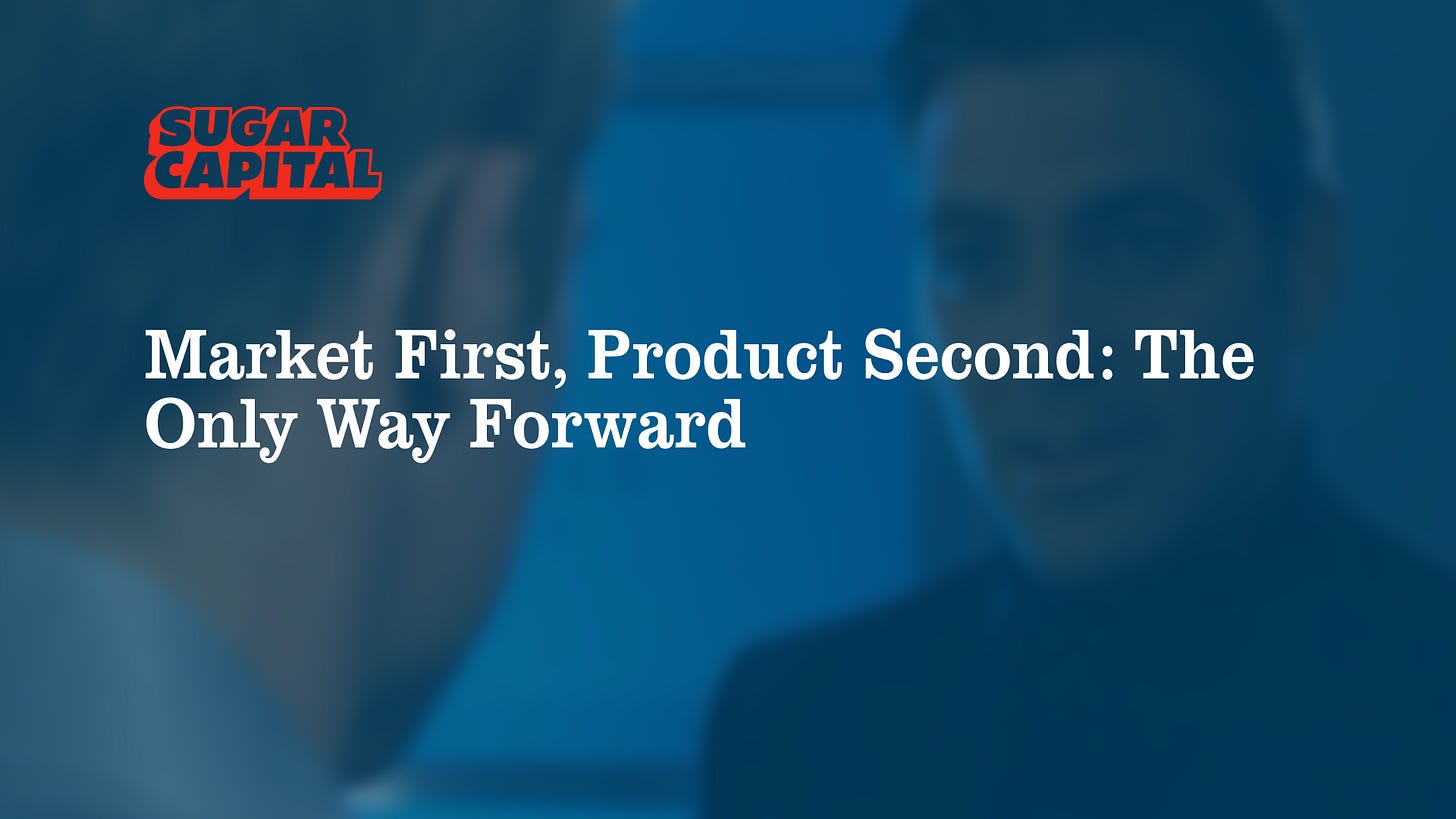Market First, Product Second: The Only Way Forward
Why Founders Must Start With Distribution in the Platform Age
“The house always win.” — Danny Ocean, Ocean’s 11 (2001)
L’Shana Tova. Here’s to 5786!
The question that haunts every boardroom and pitch meeting is deceptively simple: which comes first, the product or the market? After decades of building, funding, and watching companies rise and fall, from POPSUGAR’s ascent to Sugar Capital’s current portfolio, I’ve arrived at an uncomfortable truth. In our post-platform world, where toll roads have replaced open highways, the answer isn’t just clear; it’s existential.
The romantic notion of the product visionary tinkering until lightning strikes has become as antiquated as the fax machine. This isn’t cynicism; it’s pattern recognition.
Consider the arithmetic. Google terminates more than half of all searches without a single external click. Facebook’s algorithm treats outside links like poison. Organic reach approaches zero..
These aren't market conditions; they're market prisons.
The great businesses of the twentieth century could build first and market second. Distribution channels were stable. Accessible. Buy shelf space, purchase television spots, secure retail partnerships. Straightforward, if expensive. But today’s founders face something more insidious: channels that actively resist new entrants, that change rules without warning, that extract value rather than create it.
When distribution costs approach infinity, you cannot afford to build something and hope the market finds it. You must understand not just what the market wants, but how you’ll reach it before writing a single line of code.
I witnessed this firsthand with ShopStyle. We commanded Google’s attention for every major fashion search. “Little black dress” was ours. Then, starting in 2015, Google realized it could sell those keywords directly to our brand partners. Our SEO strength evaporated. Not through competition. Through platform decree.
The lesson was brutal: in the platform age, you don't own your distribution. You rent it.
The New Reality
The companies that thrive today aren’t those with the best products. They’re the ones that have internalized this new reality. Grüns didn’t succeed because they revolutionized nutrition. They succeeded because they understood vertical video psychology before designing their first gummy. They created “TikTok Gummies”—colorful, bite-sized, inherently shareable, engineered for seven-second attention spans, not nutritional optimization.
But here’s what Grüns understood at a deeper level: they weren’t building a better vitamin. They were engineering inevitability. They became the gummy you see five times before breakfast, the brand that owns the wellness conversation on your feed. This isn’t marketing; it’s cultural occupation. The market doesn’t reward the best product. It rewards the brand that never leaves.
Locket tells the same story in software. Boy meets girl. Boy builds app for long-distance girlfriend. App goes viral. It’s the oldest narrative repackaged for TikTok’s algorithm: authentic, romantic, shareable. The founders didn’t just build a photo widget; they built a love story that millions wanted to participate in. The product was secondary to the narrative. People weren’t downloading an app; they were joining a movement. Zero paid marketing. Pure distribution thinking.
This is what founders must understand now:
Start with distribution maps, not product roadmaps
Prototype content formats on the channel before finalizing the product
Treat paid media as infrastructure from day one, not an afterthought.
These aren't suggestions; they're survival tactics.
Justin Kan captured it perfectly: “First-time founders focus on product; second-time founders focus on distribution.”
The successful founders I encounter today ask different questions. Not “what should we build?” but “how will anyone find what we build?” They test distribution before development. They validate channels before features.
They understand a brutal truth: customers don’t buy the best product. They buy the product they can’t escape. The one that dominates their feed, their consciousness, their culture.
Presence precedes preference.
Visibility creates value. Your marketing team doesn’t exist to educate customers about features; it exists to ensure your brand means something within culture.
In our current environment, a mediocre product with brilliant distribution beats a brilliant product with mediocre distribution. Every time.
The irony cuts deep. The very companies that rode free distribution to dominance have systematically destroyed these pathways for others. Facebook on email lists. Airbnb on Craigslist. Google on the open web. They’ve pulled up the ladder after climbing it.
But the incumbents have made a fatal miscalculation. They’ve become predictable.
And predictability is vulnerability.
The Asymmetry
There is one force that rewrites the rules: artificial intelligence’s ability to flood the system with variation at near-zero cost. When distribution costs approach infinity, AI makes creation costs approach zero. The asymmetry is beautiful.
Generate a thousand variations. Test them in real time. Scale the winners instantly. You don’t need permission from the platforms when your product can personalize itself to each user, evolve based on behavior, optimize its own virality. This isn’t iteration; it’s evolution at digital speed.
The next generation of builders recognizes a fundamental truth. In a world where distribution is locked down, the product cannot be separated from its distribution. They are one and the same.
Distribution IS the brand.
The revolution isn't coming. It's here. And it belongs to those who understand that in the end, the market doesn't care about your product. It only cares about itself.
Build accordingly.



I've been hearing a lot about this combination of creator + entrepreneur. Not that every entrepreneur needs to garner millions of followers on TikTok/Instagram, but they need an audience, however small, so they can quickly iterate and test their products.
Catherine Goetze (@askcatgpt on Instagram) comes to mind, and how she's now creating physicalphones. Having an audience - at least within "consumer" - feels like a necessity today. I actually see a lot of founders building community through Substack, which then translates to their product.
Amongst your portfolio companies and the prospective companies that you speak with, how do you suggest they approach creator + entrepreneur?